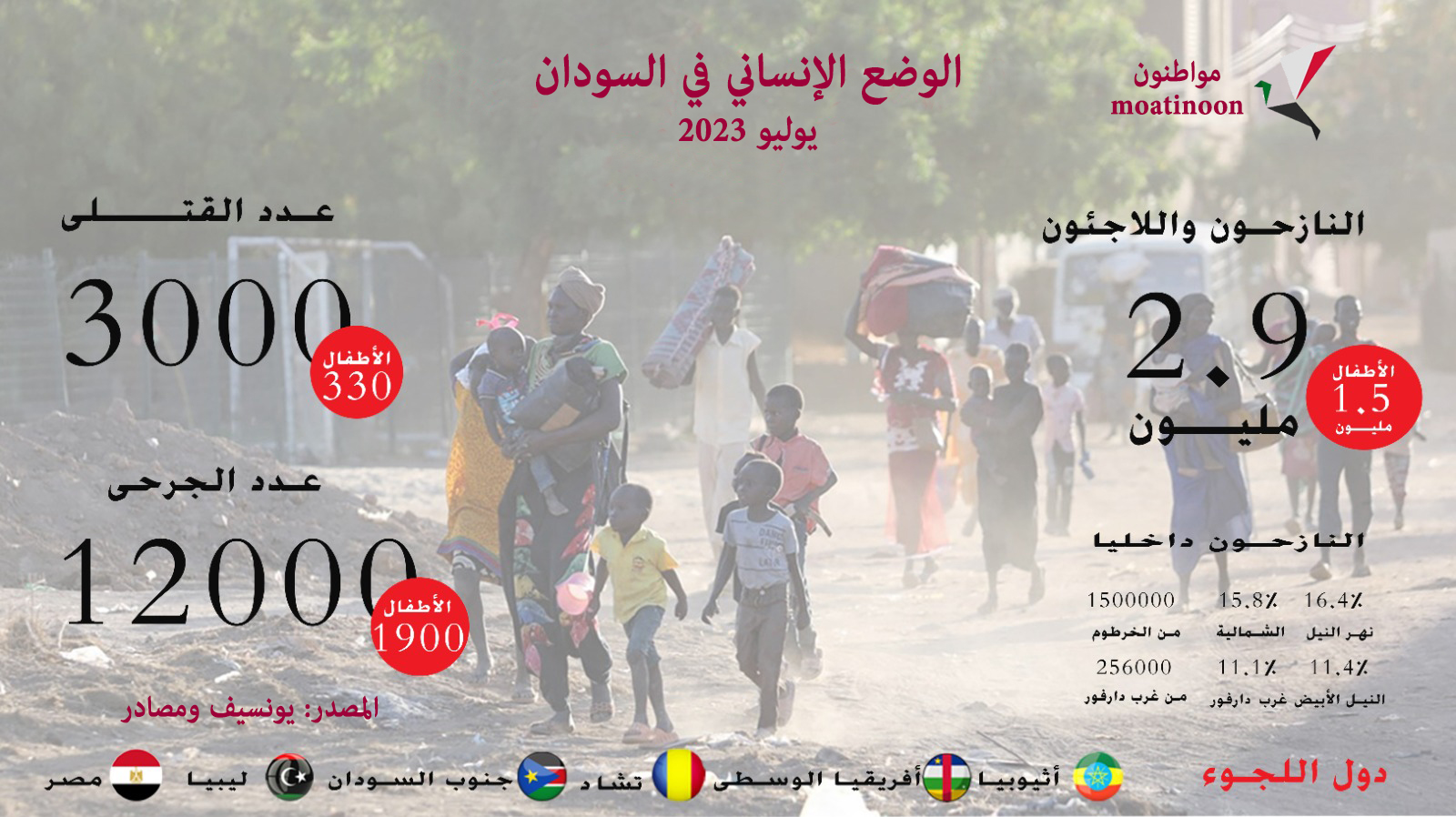
UNICEF Sudan Humanitarian Situation Report as at 6 July 2023
• The conflict in Sudan is a deepening children’s crisis. Critical needs are rapidly multiplying – 1 in every 2 children or 13.6 million children in Sudan are in need of urgent humanitarian assistance.
• Since the conflict between Sudanese Armed Forces (SAF) and Rapid Response Forces (RSF) erupted on 15 April, over 2.9 million people have been displaced across Sudan and in to neighboring countries – the Central African Republic,
Chad, Egypt, Ethiopia, Libya and South Sudan, including around 1.5 million children.
• The humanitarian situation continues to deteriorate, with the most severe clashes continuing in Khartoum and Geneina in West Darfur, and clashes between SPLM-N Al Hilu faction and SAF reported in South Kordofan and Blue Nile states.
• The situation in conflict zones and some IDP concentration points remain dire. With active fighting and looting in conflict areas, basic services including immunization services and cold chain are not fully functional, leaving children at significant risk of disease. Outbreaks of measles, increase in mortality rates associated with acute malnutrition, overcrowding and insufficient access to basic services have been reported in Dafur and White Nile.
• Since the start of the conflict, UNICEF Sudan has reached over 3 million children and women with health supplies and 1.4 million people with safe drinking water. Additionally, almost 100,000 children are attending safe learning spaces, including solar-powered e-learning centres.
• To continue to save lives, UNICEF needs US838 million in 2023 to provide lifesaving assistance, with US100 million urgently needed in July - August to sustain and scale-up crisis response.
Situation overview – a deepening children’s crisis
The conflict continues to rage across many parts of the country, with intense clashes continuing in Khartoum and Darfur, and clashes between SPLM-N Al Hilu faction and SAF reported in South Kordofan and Blue Nile states. More active conflict and disruption of lifesaving services will only push children and vulnerable deeper into desperation, severely challenging their rights to survive and thrive.
The conflict has taken an ethnic dimension in Darfur, where the situation remains deeply concerning, leaving 5 million children at grave risk.
The fighting in Sudan has already led to the displacement of over 2.9 million people across Sudan and in to neighboring countries – the Central African Republic, Chad, Egypt, Ethiopia, Libya and South Sudan, including around 1.5 million children.
The highest proportions of the internally displaced have been observed in River Nile (16.4 per cent), Northern (15.8 per cent), White Nile (11.4 per cent) and West Darfur (11.1 per cent) states. Most of them are staying with relatives in host communities. They were originally displaced from seven states with the majority from Khartoum (1.5 million), followed by West Darfur (256,000). Renewed clashes in South Darfur, North Darfur and West Darfur from 18 to 24 June have contributed to the increase in numbers of people displaced. Overall, about 670,000 people have been newly internally displaced in the Darfur region since the onset of the clashes in April, including many people who had already been internally displaced due to previous conflict in Darfur.
According to the Federal Ministry of Health (FMoH), over 1,100 people have been killed and close to 12,000 injured across the country since the beginning of hostilities on 15 April.2 UNICEF has received credible reports that over 330 children have been killed, and more than 1,900 children have been injured.
Even before the conflict, more than 3 million women and girls in Sudan were at risk of gender-based violence, including intimate-partner violence. This number has since climbed to an estimated 4.2 million people. Since this conflict began, the UN Human Rights Office in Sudan has received credible reports of 21 incidents of conflict-related sexual violence against at least 57 women and girls. The victims include at least 10 girls. Seven Principals of UN agencies: Top UN Officials have sounded alarm at the spike in violence against women and girls.
The operating environment in Sudan has become highly complex. Humanitarian access to the affected population due to security and capacity on the ground remains a key challenge in scaling-up the life-saving emergency response. In addition:
• The functioning of public infrastructure and services continues to be affected due to the ongoing fighting, looting and restriction of movement of personnel and supplies due to safety and security.
• The majority of civil servants have not received their salaries since the start of the conflict and any payments to frontline workers are constrained by cash shortages. Over the past two weeks network availability has improved and thus the use of mobile banking applications, particularly “Bankak” by the Bank of Khartoum, has expanded as these applications offer cashless payment options and have national coverage, including for the purchase of cash at a premium price due to difficulties in accessing cash during this difficult time.
• Very limited or no electricity, communication disruption and a spike in fuel and essential commodities prices further threaten the operational capacity of water systems and health facilities, including cold chain.
• Funding availability is curtailing UNICEF’s capacity to deliver critical supplies and support services

